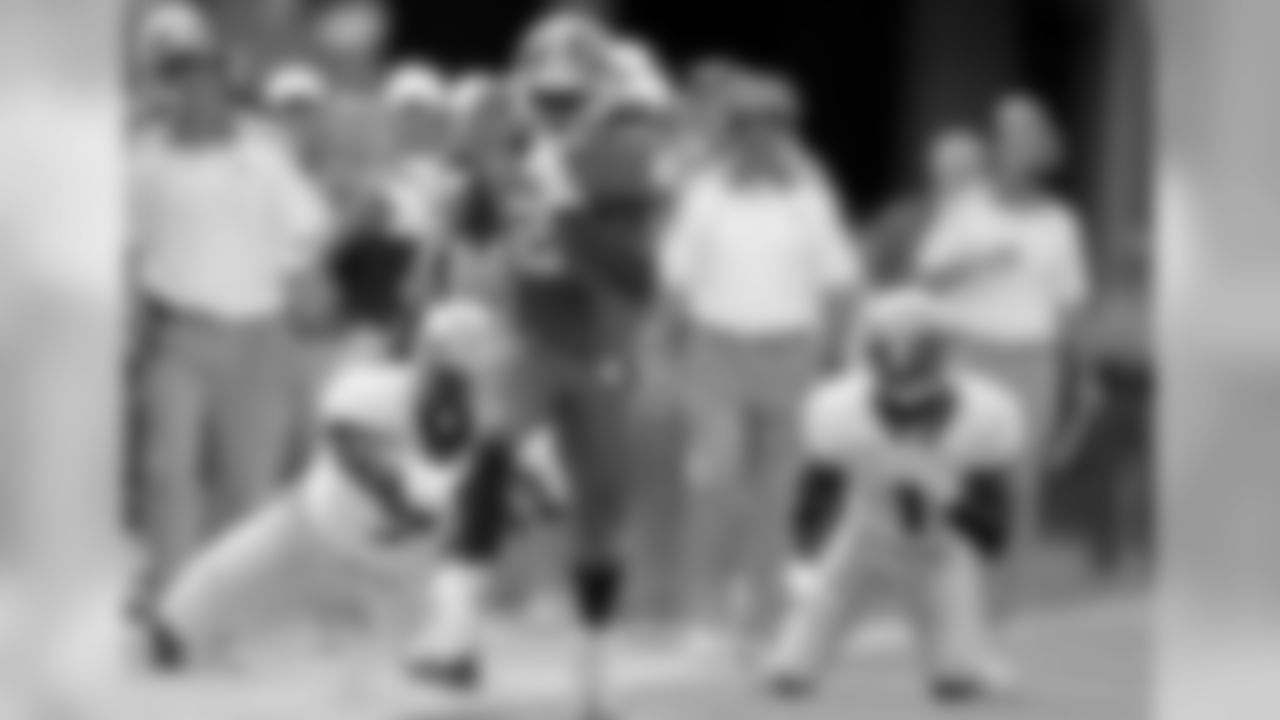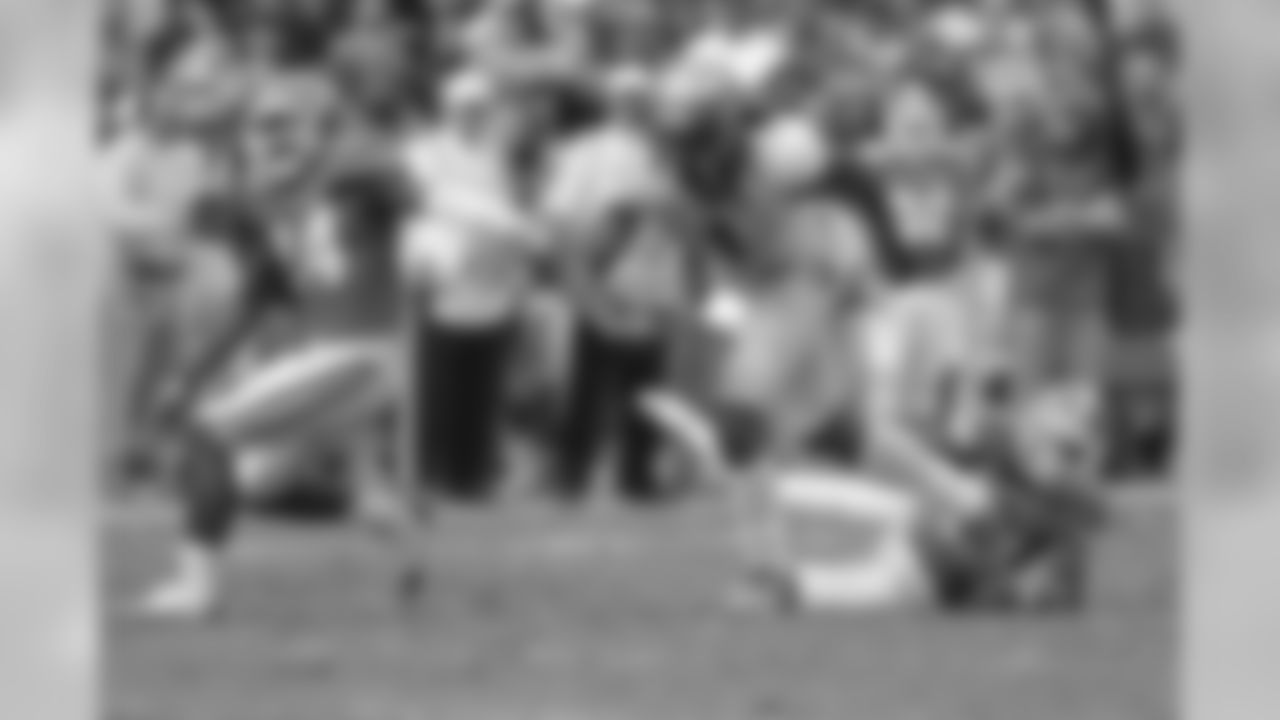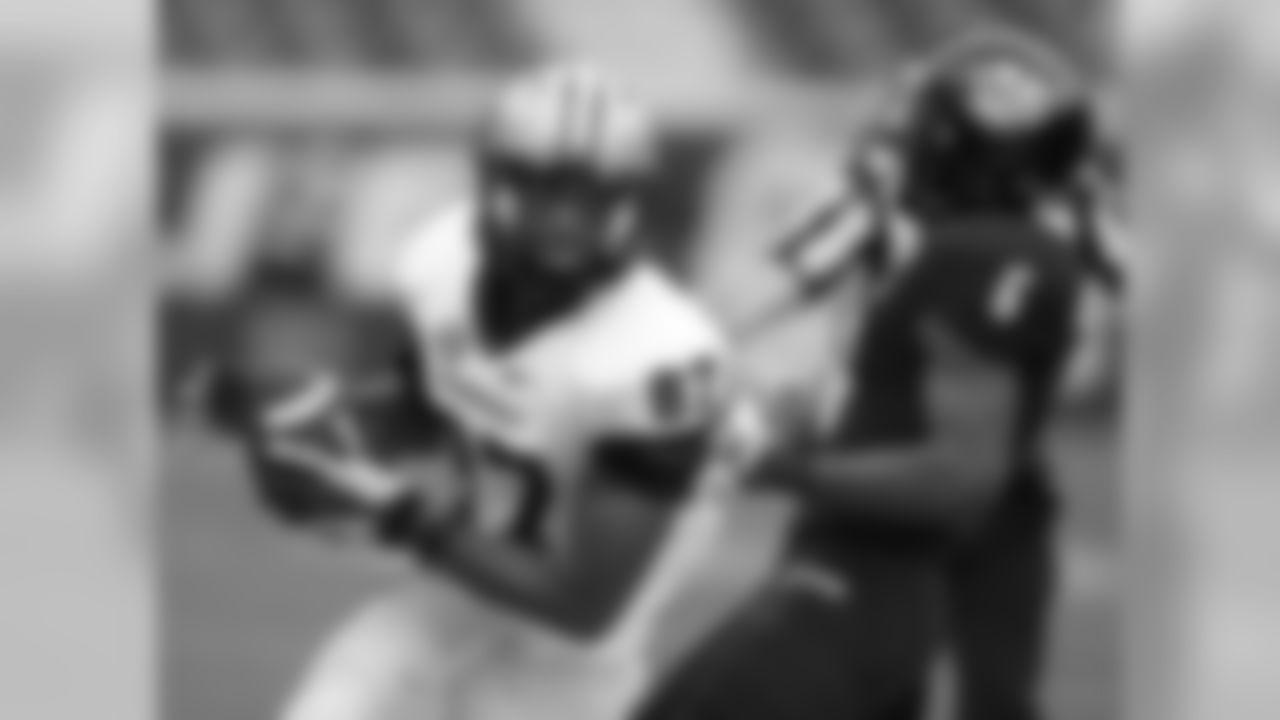They've been called the wide receiver answer to the 1983 quarterback class. The 1996 draft class of wideouts has long been seen as the gold standard for that position. With seven of them earning Pro Bowl recognition at least once in their career it speaks to the depth of talent in a class that included Bills first-round pick Eric Moulds. Much like the '96 class, the 2014 NFL draft class has been defined by the wide receivers and the group is producing much faster than their predecessors did from the outset.
Instant impact
The WR class of 2014, led by Bills wideout Sammy Watkins, has been called the wide receiver answer to the 1983 quarterback class.









There were 12 receivers selected in the first two rounds of the draft last spring. Two-thirds of that group are genuine contributors to their team's offensive output. The top four receivers taken last May (Sammy Watkins, Mike Evans, Odell Beckham and Kelvin Benjamin) have all eclipsed the 800-yard plateau to currently rank among the top 25 wideouts in the league.
Philadelphia's Jordan Matthews and Miami's Jarvis Landry aren't far behind and rank in the top 50 in receiving yardage. The NFL readiness of this year's class is nothing short of impressive.
"I just think it's a new era," Watkins told Buffalobills.com. "You've got great coaches that learned the game and knew things that wide receivers are using to help us out. Most of all I think we're all blessed with the ability and we're all just taking advantage of the opportunity every week and playing. We're watching film and knowing our opponent and really just having the swagger and that confidence to go out there and go against the best cornerbacks."
Moulds, a three-time Pro Bowl receiver in his career, still watches enough NFL football to know what's going on right now with the rookie class.
"From watching from afar they look very explosive," he said. "It's more of a passing league than when the '96 class came in and played. But looking at Sammy (Watkins) and (Kelvin) Benjamin and the kid down in Tampa (Mike Evans) they have a lot of players that are making plays and playing as rookies. It looks like a very good class."
Moulds, who didn't break out until his third season in the NFL, also has his theories as to why a receiver class like that of 2014 is doing so well so soon.
Systems and starting early

When Moulds left Mississippi State for the NFL he was coming out of a run-oriented offense. Even his fellow rookies in '96 that played in more open offenses as undergrads didn't experience the kind of spread formations and pass happy systems of college nowadays. So even though the NFL is known as a passing league, the college programs have been passing even more often. That stimulates player development at the receiver position sooner rather than later.
"The colleges are more advanced and it's more of a passing league too, so a lot of these college teams are using pro-style systems and these players are advanced coming into the NFL and they're ready to play more so than when we came in," said Moulds. "Obviously our group in '96 was talented coming out, but college programs now are preparing them and allowing them to attend their coaches' camps and get a lot of their passing trees and their philosophy of how their passing game goes. So a lot of these players are coming right in and not missing a beat and the game is a little bit easier for them."
When Moulds was a highly-recruited high school player he wasn't going to college-based passing camps for potential prospects. They didn't exist. Watkins meanwhile went to Clemson's summer football camp as a high school junior. There he ran a lot of the same plays he eventually ran after he committed to the Tigers.
Watkins was essentially running routes and learning pass game concepts that Moulds didn't even see on paper until he got to the NFL.
"Some of it's about the ability and the confidence we had in college when we dominated the game, but we also had the coaches helping us out in the systems," Watkins said.
Now in the NFL that approach with the coaching staff hasn't changed.
"They're just putting us in great situations to make plays now," he said. "That starts with us as they have prepared us the right way during the week and now they're pushing us to the limit."
Positional value
Back in the mid to late 90's there was still a heavy value placed on a featured running back. Players like Barry Sanders, Terrell Davis, Jerome Bettis and Emmitt Smith were all the engines to their offense. That focus has since shifted to the receiver position.
"The value of the running back is not as high as it used to be there's more emphasis on the passing game," said Moulds. "So their receiver numbers now are a lot higher than ours. We would try to build a balanced attack. Back then we were closer to 60 run and 40 pass and now it's flipped the other way 60 pass, 40 run."
"You've got those big guys they're paying up front," said Watkins of opposing defensive lines. "They're not just going to let you sit there and run the ball. Look at our defensive line, you can't really run the ball on those guys. One thing you have to do is pass. You have to max protect and pass."
"I had this conversation with Peerless Price recently and when we played if you were targeted seven to eight times a game that was a high number to get eight targets a game," said Moulds. "If you got more than 10 targets a game with the system that we ran you were having a great day and we were featuring you that day and you were just a hot player that day. Nowadays I see guys get 15, 16 targets and they're passing the ball a lot more and trying to get athletes in space so obviously the numbers are going to be higher."
Pressure to perform
All of those additional opportunities mean a lot of production is expected from the likes of Watkins, Evans, Beckham and Benjamin. That is one form of pressure Moulds did not experience.
That's different, "he said. "When a kid is picked high now they've got to play right away. There isn't time for a year or two to develop. They get thrown in the fire so they have to become great players right away."
"We all know that it's a passing league and it's on the receivers on every team," Watkins said. "It's on us to perform. You're a first round pick so go out there and make plays. So you have to have confidence in yourself when you go out there."
So far so good for each of the first-round draft choices. Four of the five taken in the first round have a good shot at eclipsing the 1,000-yard threshold before season's end. Brandin Cooks, the Saints' leading receiver for most of the year, likely would've made a run at it as well had he not suffered a season-ending thumb injury.
Which group is better?
|
It's a question that could be hotly debated. With no busts out of all five first-round picks and second and third-round picks with borderline Hall of Fame numbers (Muhsin Muhammad) and all-time numbers (Terrell Owens) and a fifth-round pick with 50-plus touchdowns (Joe Horn) the '96 group has talent and depth. They're also likely to have their first Hall of Famer in Marvin Harrison next summer. "Obviously I'm going to be a little biased because I feel like the '96 class with myself, Marvin Harrison, Eddie Kennison and Keyshawn Johnson and Terrell Owens and Amani Toomer, we had a lot of guys who were pretty good and became All-Pros," said Moulds. "There are only a few of us out of that class that didn't make the Pro Bowl. That was a pretty good group." Looking at what the 2014 class has done from the drop however, makes one wonder the kinds of numbers the balance of their group will have when their careers are over. What's almost scary is this year's rookie crop is just scratching the surface. "I think we're not even at our peak yet," said Watkins of his draft classmates. "We just hit the ground running. We haven't even got everything figured out yet. Once we actually get a full offseason and we can work on some things I think we can be 10 times better. "Next year I think we're going to have at least four or five guys in our group be top receivers leading categories. We'll have guys with six and seven consecutive 100-yard games. We're going to have guys like that. For our group we've just got to keep being hungry, keep working hard and keep preparing the right way. If you perform as a wideout you can be really successful in the league."
This article has been reproduced in a new format and may be missing content or contain faulty links. Please use the Contact Us link in our site footer to report an issue.
|







